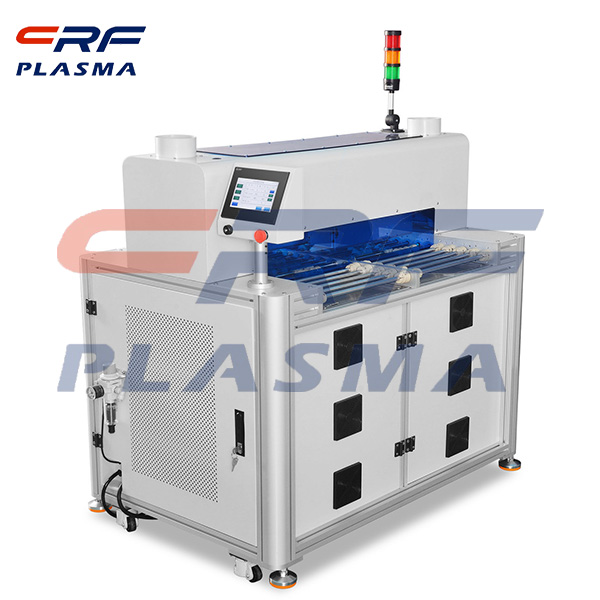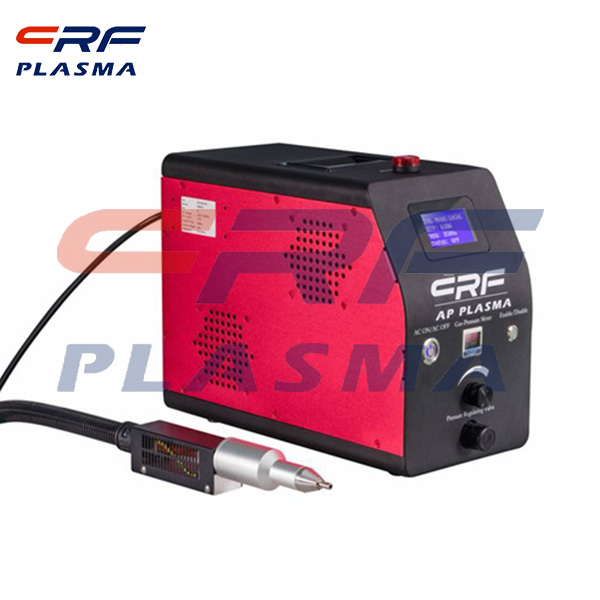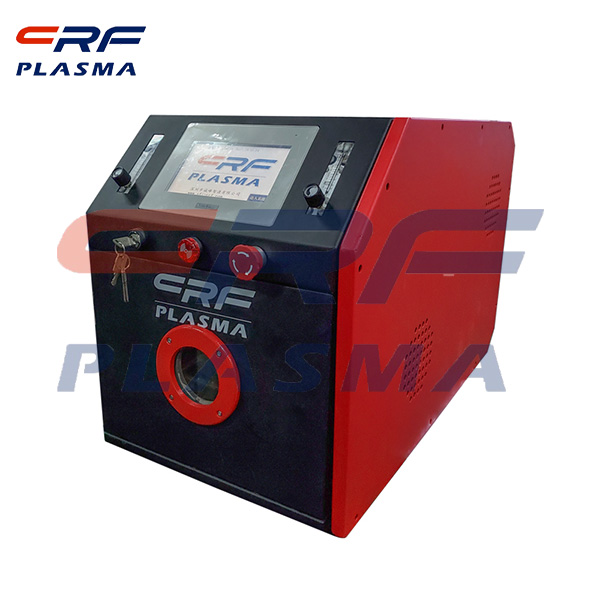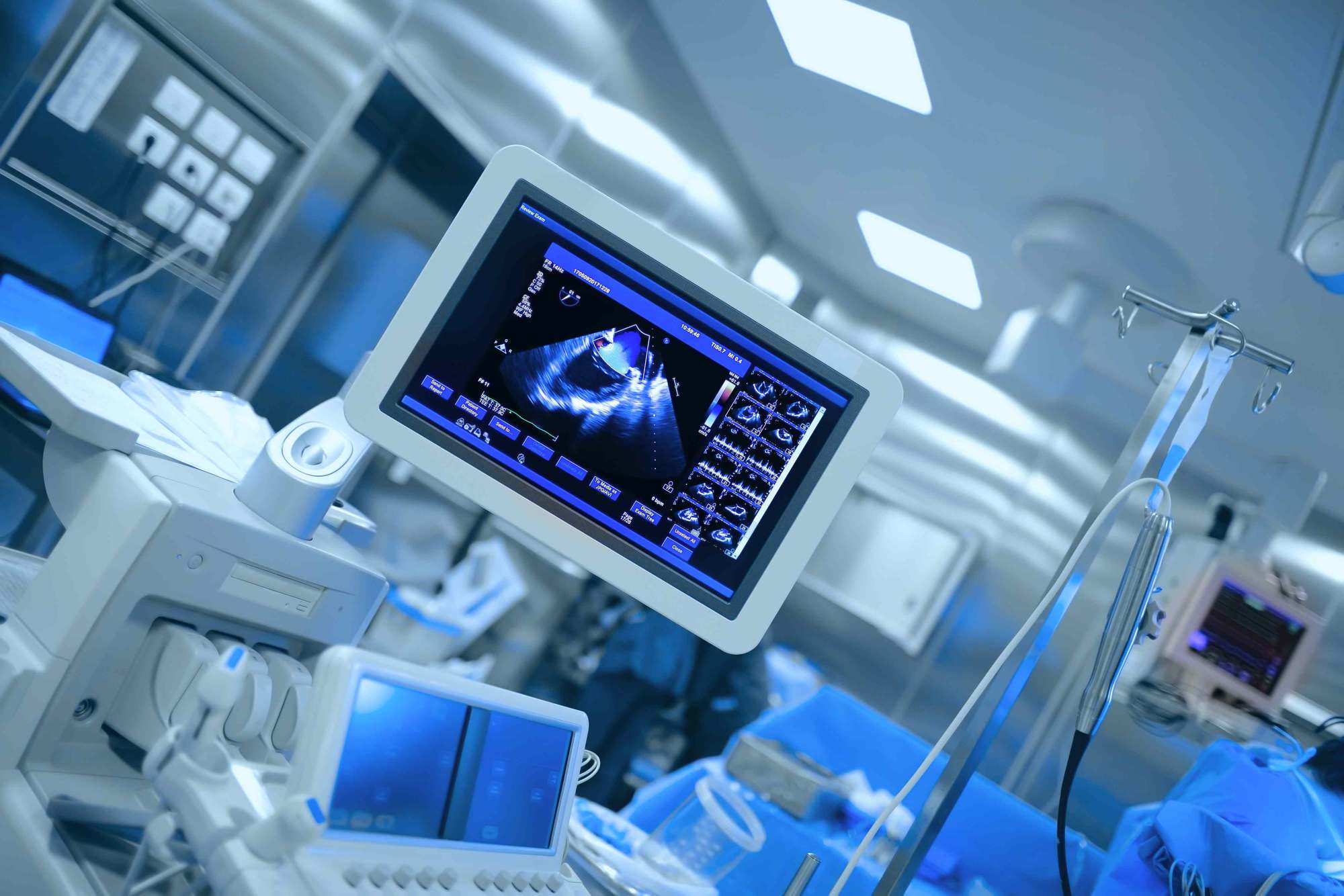
Welcome to Shenzhen Sing Fung Intelligent Manufacturing Co., Ltd.
E-mail:shaobo@sfi-crf.com
Chinese contributions to the development of plasma etching machines for low-temperature plasma cleaning Machines
- Categories:Technical Support
- Author:plasma cleaning machine-surface treatment equipment-CRF plasma machine-Sing Fung Intelligent Manufacturing
- Origin:
- Time of issue:2020-12-25
- Views:
(Summary description)"Descendant of the dragon" has made great contribution to the development of plasma etching machine in the past half century. Silicon valley in 1999 published "hero" mentioned in the two and the low temperature plasma etching equipment development is closely related to the Chinese, one is Lin Jiebing Dr (David k., Lam) was born in China guangdong, in 1967 graduated from the engineering department of physics, university of Toronto after received the chemical engineering at the Massachusetts institute of technology (1970) and Ph.D. (1973) and increased in 1980, the United States, Lam semiconductor word, when the company went public in 1984 is already the world semiconductor equipment manufacturers. Dr Lin set out to come up with a model for wafer-wafer etching to ensure a more controlled etching environment. In the early stage of the development of the etching machine, he focused on the etching of relatively easy polysilicon materials with strategic vision, which enabled Pan Lin Semiconductor to rapidly develop the ICP of plasma cleaning machine with high quality, stability and high market share, and also bought time for the subsequent development of CCP machine. At the beginning of the 20th century, Panlin Semiconductor was consistently ranked among the top three in the market share of etching machines. Another Silicon Valley hero associated with plasma etching is Dr. David Wang, born in Nanjing, China. He graduated from Central Plains University in Taiwan with a master's degree in chemical engineering in 1970 from the University of Utah and then a doctorate in materials science from the University of California, Berkeley. Since 1977, he has been engaged in plasma etching and chemical vapor bonding research at bell Laboratories headquarters in New Jersey. Then applied materials in the company President, chairman and CEO Jim Morgan (Jim Morgan) invited, joining applied materials inc. In 1980, over the next 25 years, there are hundreds of patents in its invention collection of single chip technology began to prototype the Smithsonian museum in Washington in 1993 water for a long time, this is displayed in the museum of Chinese invention design of machines. In the same room were bell telephones, Macintosh computers, and an IBM machine from the beginning. In 1983 he won the Semiconductor of the year award for the design of the etching machine for the Hexode-Type RIE plasma cleaning machine. The following year, he was awarded the SEMI Award by the Semiconductor Equipment and Materials Association for the development of plasma etching standards for the semiconductor industry. At the end of 1993 He was promoted to vice President of Applied Materials, managing global commercial operations. In 1994, he received the SEMI Lifetime Achievement Award for his contributions to the semiconductor equipment industry. Dr. Lin Jie-ping and Dr. Wang Ningguo have been selected to the American Silicon Engineering Association Hall of Fame. Plasma etching equipment is the cornerstone to ensure high quality semiconductor products mass production. At the beginning of the 21st century, the mainstream plasma etchers were all foreign guns, and the U.S. government imposed export controls on semiconductor equipment in 1995, which meant that advanced etchers were not allowed to be sold on the mainland. Domestic plasma cleaning machine etching equipment manufacturing started in 2003, north of the North Microelectronics Company (founded in 2003) is committed to silicon etching machine development, south of the Micro semiconductor company (founded in 2004) began to build dielectric material etching machine. Both companies have many experts returning from overseas. Among them, Dr. Gerald Yin, CEO and chief executive officer of China Micro Semiconductor Company, graduated from The University of Science and Technology of China in his early years. He obtained his doctorate in physical chemistry from the University of California, Los Angeles in 1984 and now holds more than 70 foreign patents. The successful development of rainbow plasma etching equipment (dielectric etching) in the mid-to-late 1980s at Fanlin Semiconductor made the company one of the specialists in this field. In the early 1990s, I joined Applied Materials to be responsible for the r&d of plasma etching department of plasma cleaning machines. The products he develops or participates in account for approximately 50% of the plasma etching industry. His unique experience in the two major etching equipment manufacturers has enabled him to update and update the etching machines corresponding to different technology nodes. In 2004, he resigned as vice president of Applied Materials and returned to China to set up China Micro Semiconductor Equipment Co., LTD in Shanghai. CCP etching machine of plasma cleaning machine developed at present, with uHF and LOW frequency
Chinese contributions to the development of plasma etching machines for low-temperature plasma cleaning Machines
(Summary description)"Descendant of the dragon" has made great contribution to the development of plasma etching machine in the past half century. Silicon valley in 1999 published "hero" mentioned in the two and the low temperature plasma etching equipment development is closely related to the Chinese, one is Lin Jiebing Dr (David k., Lam) was born in China guangdong, in 1967 graduated from the engineering department of physics, university of Toronto after received the chemical engineering at the Massachusetts institute of technology (1970) and Ph.D. (1973) and increased in 1980, the United States, Lam semiconductor word, when the company went public in 1984 is already the world semiconductor equipment manufacturers. Dr Lin set out to come up with a model for wafer-wafer etching to ensure a more controlled etching environment. In the early stage of the development of the etching machine, he focused on the etching of relatively easy polysilicon materials with strategic vision, which enabled Pan Lin Semiconductor to rapidly develop the ICP of plasma cleaning machine with high quality, stability and high market share, and also bought time for the subsequent development of CCP machine. At the beginning of the 20th century, Panlin Semiconductor was consistently ranked among the top three in the market share of etching machines.
Another Silicon Valley hero associated with plasma etching is Dr. David Wang, born in Nanjing, China. He graduated from Central Plains University in Taiwan with a master's degree in chemical engineering in 1970 from the University of Utah and then a doctorate in materials science from the University of California, Berkeley. Since 1977, he has been engaged in plasma etching and chemical vapor bonding research at bell Laboratories headquarters in New Jersey. Then applied materials in the company President, chairman and CEO Jim Morgan (Jim Morgan) invited, joining applied materials inc. In 1980, over the next 25 years, there are hundreds of patents in its invention collection of single chip technology began to prototype the Smithsonian museum in Washington in 1993 water for a long time, this is displayed in the museum of Chinese invention design of machines. In the same room were bell telephones, Macintosh computers, and an IBM machine from the beginning. In 1983 he won the Semiconductor of the year award for the design of the etching machine for the Hexode-Type RIE plasma cleaning machine. The following year, he was awarded the SEMI Award by the Semiconductor Equipment and Materials Association for the development of plasma etching standards for the semiconductor industry. At the end of 1993 He was promoted to vice President of Applied Materials, managing global commercial operations. In 1994, he received the SEMI Lifetime Achievement Award for his contributions to the semiconductor equipment industry. Dr. Lin Jie-ping and Dr. Wang Ningguo have been selected to the American Silicon Engineering Association Hall of Fame.
Plasma etching equipment is the cornerstone to ensure high quality semiconductor products mass production. At the beginning of the 21st century, the mainstream plasma etchers were all foreign guns, and the U.S. government imposed export controls on semiconductor equipment in 1995, which meant that advanced etchers were not allowed to be sold on the mainland. Domestic plasma cleaning machine etching equipment manufacturing started in 2003, north of the North Microelectronics Company (founded in 2003) is committed to silicon etching machine development, south of the Micro semiconductor company (founded in 2004) began to build dielectric material etching machine. Both companies have many experts returning from overseas. Among them, Dr. Gerald Yin, CEO and chief executive officer of China Micro Semiconductor Company, graduated from The University of Science and Technology of China in his early years. He obtained his doctorate in physical chemistry from the University of California, Los Angeles in 1984 and now holds more than 70 foreign patents. The successful development of rainbow plasma etching equipment (dielectric etching) in the mid-to-late 1980s at Fanlin Semiconductor made the company one of the specialists in this field. In the early 1990s, I joined Applied Materials to be responsible for the r&d of plasma etching department of plasma cleaning machines. The products he develops or participates in account for approximately 50% of the plasma etching industry. His unique experience in the two major etching equipment manufacturers has enabled him to update and update the etching machines corresponding to different technology nodes. In 2004, he resigned as vice president of Applied Materials and returned to China to set up China Micro Semiconductor Equipment Co., LTD in Shanghai. CCP etching machine of plasma cleaning machine developed at present, with uHF and LOW frequency
- Categories:Technical Support
- Author:plasma cleaning machine-surface treatment equipment-CRF plasma machine-Sing Fung Intelligent Manufacturing
- Origin:
- Time of issue:2020-12-25 09:59
- Views:
Chinese contributions to the development of plasma etching machines for low-temperature plasma cleaning Machines:
"Descendant of the dragon" has made great contribution to the development of plasma etching machine in the past half century. Silicon valley in 1999 published "hero" mentioned in the two and the low temperature plasma etching equipment development is closely related to the Chinese, one is Lin Jiebing Dr (David k., Lam) was born in China guangdong, in 1967 graduated from the engineering department of physics, university of Toronto after received the chemical engineering at the Massachusetts institute of technology (1970) and Ph.D. (1973) and increased in 1980, the United States, Lam semiconductor word, when the company went public in 1984 is already the world semiconductor equipment manufacturers. Dr Lin set out to come up with a model for wafer-wafer etching to ensure a more controlled etching environment. In the early stage of the development of the etching machine, he focused on the etching of relatively easy polysilicon materials with strategic vision, which enabled Pan Lin Semiconductor to rapidly develop the ICP of plasma cleaning machine with high quality, stability and high market share, and also bought time for the subsequent development of CCP machine. At the beginning of the 20th century, Panlin Semiconductor was consistently ranked among the top three in the market share of etching machines.
Another Silicon Valley hero associated with plasma etching is Dr. David Wang, born in Nanjing, China. He graduated from Central Plains University in Taiwan with a master's degree in chemical engineering in 1970 from the University of Utah and then a doctorate in materials science from the University of California, Berkeley. Since 1977, he has been engaged in plasma etching and chemical vapor bonding research at bell Laboratories headquarters in New Jersey. Then applied materials in the company President, chairman and CEO Jim Morgan (Jim Morgan) invited, joining applied materials inc. In 1980, over the next 25 years, there are hundreds of patents in its invention collection of single chip technology began to prototype the Smithsonian museum in Washington in 1993 water for a long time, this is displayed in the museum of Chinese invention design of machines. In the same room were bell telephones, Macintosh computers, and an IBM machine from the beginning. In 1983 he won the Semiconductor of the year award for the design of the etching machine for the Hexode-Type RIE plasma cleaning machine. The following year, he was awarded the SEMI Award by the Semiconductor Equipment and Materials Association for the development of plasma etching standards for the semiconductor industry. At the end of 1993 He was promoted to vice President of Applied Materials, managing global commercial operations. In 1994, he received the SEMI Lifetime Achievement Award for his contributions to the semiconductor equipment industry. Dr. Lin Jie-ping and Dr. Wang Ningguo have been selected to the American Silicon Engineering Association Hall of Fame.
Plasma etching equipment is the cornerstone to ensure high quality semiconductor products mass production. At the beginning of the 21st century, the mainstream plasma etchers were all foreign guns, and the U.S. government imposed export controls on semiconductor equipment in 1995, which meant that advanced etchers were not allowed to be sold on the mainland. Domestic plasma cleaning machine etching equipment manufacturing started in 2003, north of the North Microelectronics Company (founded in 2003) is committed to silicon etching machine development, south of the Micro semiconductor company (founded in 2004) began to build dielectric material etching machine. Both companies have many experts returning from overseas. Among them, Dr. Gerald Yin, CEO and chief executive officer of China Micro Semiconductor Company, graduated from The University of Science and Technology of China in his early years. He obtained his doctorate in physical chemistry from the University of California, Los Angeles in 1984 and now holds more than 70 foreign patents. The successful development of rainbow plasma etching equipment (dielectric etching) in the mid-to-late 1980s at Fanlin Semiconductor made the company one of the specialists in this field. In the early 1990s, I joined Applied Materials to be responsible for the r&d of plasma etching department of plasma cleaning machines. The products he develops or participates in account for approximately 50% of the plasma etching industry. His unique experience in the two major etching equipment manufacturers has enabled him to update and update the etching machines corresponding to different technology nodes. In 2004, he resigned as vice president of Applied Materials and returned to China to set up China Micro Semiconductor Equipment Co., LTD in Shanghai. CCP etching machine of plasma cleaning machine developed at present, with uHF and LOW frequency hybrid rf de-coupling reactive plasma source, unique multi-reaction cavity double-reaction table system, has made breakthrough progress in etching 28nm logic low dielectric material and memory dielectric material, and entered the market. In early 2015, SEMI made a breakthrough in promoting a revision of the U.S. government's export control list of semiconductor equipment: recognition of the presence of anisotropic plasma etching equipment in China and the lifting of a 20-year ban on U.S. national security exports (Professional Photovoltaic Media/Century New Energy network). This is also closely related to CCP, the plasma cleaning machine of China Micro Semiconductor Company, and the historic breakthrough made by Northern Microelectronics Company in silicon etching of logic 28nm.

Scan the QR code to read on your phone

TEL:0755-3367 3020 / 0755-3367 3019

E-mail:sales-sfi@sfi-crf.com

ADD:Mabao Industrial Zone, Huangpu, Baoan District, Shenzhen


















